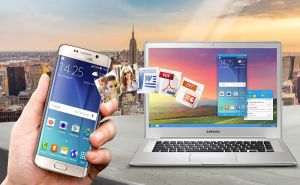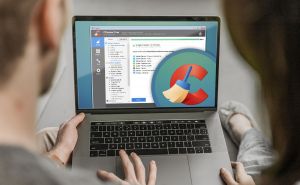 How to stream media from your PC to your mobile device
How to stream media from your PC to your mobile device
Nowadays, there are more and more people that start using their wide-display smartphones and tablets to go online and access their data. It is much easier to carry a smartphone or a tablet around your house than a laptop, isn't it? Moreover, some of the mobile devices come with system configurations that can even rival slightly older computers or laptops.
The wide displays of mobile devices that support high-definition (HD) videos make smartphones and tablets more convenient for playback of movies or YouTube videos. The downside is that HD videos consume a lot of resources, thus you may quickly run out of money if you use 3G or even 4G LTE connectivity. Naturally, you can use Wi-Fi connectivity, but in case your Internet connection is not fast enough, the video will be buffering. Moreover, some of your favorite movies simply cannot be found on the Internet or require additional fees for playback. If you find yourself in a situation like this, then there are two things you can do. You can either copy the videos and movies on your mobile phone or tablet (which is not very effective if you don't have enough free storage space) or, you can simply stream the media from your computer or laptop and watch it on your device with no problems.
So, if you want to know how to stream media from your PC or laptop to all of your mobile devices, then keep reading this guide. Now, there are several ways to do that and I will present each of them below.
1. Using Windows' built-in DLNA Media Server
In case you didn't know, Windows OS comes with a feature that allows you to turn your computer into a DLNA media server. This will let you share your photos, music and video files to all the DLNA-enabled devices of your network. By the way, it also works the other way around, but let's focus on streaming the media from PC to mobile devices.
In order to enable the DLNA media server on your computer, simply type "Media streaming options" in your search bar (if you are using Windows 10), as you can see in the image below. If you are using an older version of Windows, navigate to "Network and Sharing Center" in the "Control Panel" and find the above mentioned option.
Find Media Streaming Options
Using the window that will appear you will be able to start customizing the media streaming options.
Enable option
Once you have clicked on the button, it is time to choose your streaming options. You can select the devices that will be able to access your media by checking the "allowed" boxes next to each system, as you can see in the image below.
Select devices
You can further customize the media streaming settings for each of the desired devices and choose what is streamed to your systems, by clicking on the "Customize" link next to the "Allowed" checkbox. You can also set up parental control, in case you want to stream media to a device used by your kids, or you can stream only high quality media by forcing a minimum "star rating" policy for your media files.
Customize media streaming options
Now that you have customized your media streaming options and enabled the DLNA media server, you might want to know how to stream your media files, right? Well, all you have to do, is simply place your images, music and video files in each of the libraries available on your computer (Pictures, Music and Video).
Music Library
You don't even have to move your files in the respective libraries, because your can easily add entire folders by right-clicking on your directory and selecting the desired library.
Add folder to library
Using third-party applications
Using Windows' DLNA media server might be the easiest way to stream media to other computers and devices of your network, but it only works with specific types of files, as there is no way to automatically convert the files in real-time, so that other devices can play them. Luckily, there are several applications that you can download from the Internet which will allow you to stream videos, music or pictures from your PC to various types of devices, regardless of their format. Applications like Ustream, Plex or Emby (formerly known as Media Browser) can prove to be exactly what you need in case you are unhappy with Windows' media server.
Conclusion
Even if DLNA servers might become obsolete in the near future as modern devices might not offer support for them (for example, PS4 doesn't support DLNA servers), currently they are quite useful, mostly because of the wide range of supported systems (you can even use them on Linux and Mac). Therefore, until cloud-streaming solutions become the standard for media streaming, it is safe to assume that using DLNA media servers is, still, an efficient way to broadcast videos, music or pictures.
If you have any questions or suggestions, fell free to leave us a comment in the section below.





Comments
Subscribe to comments